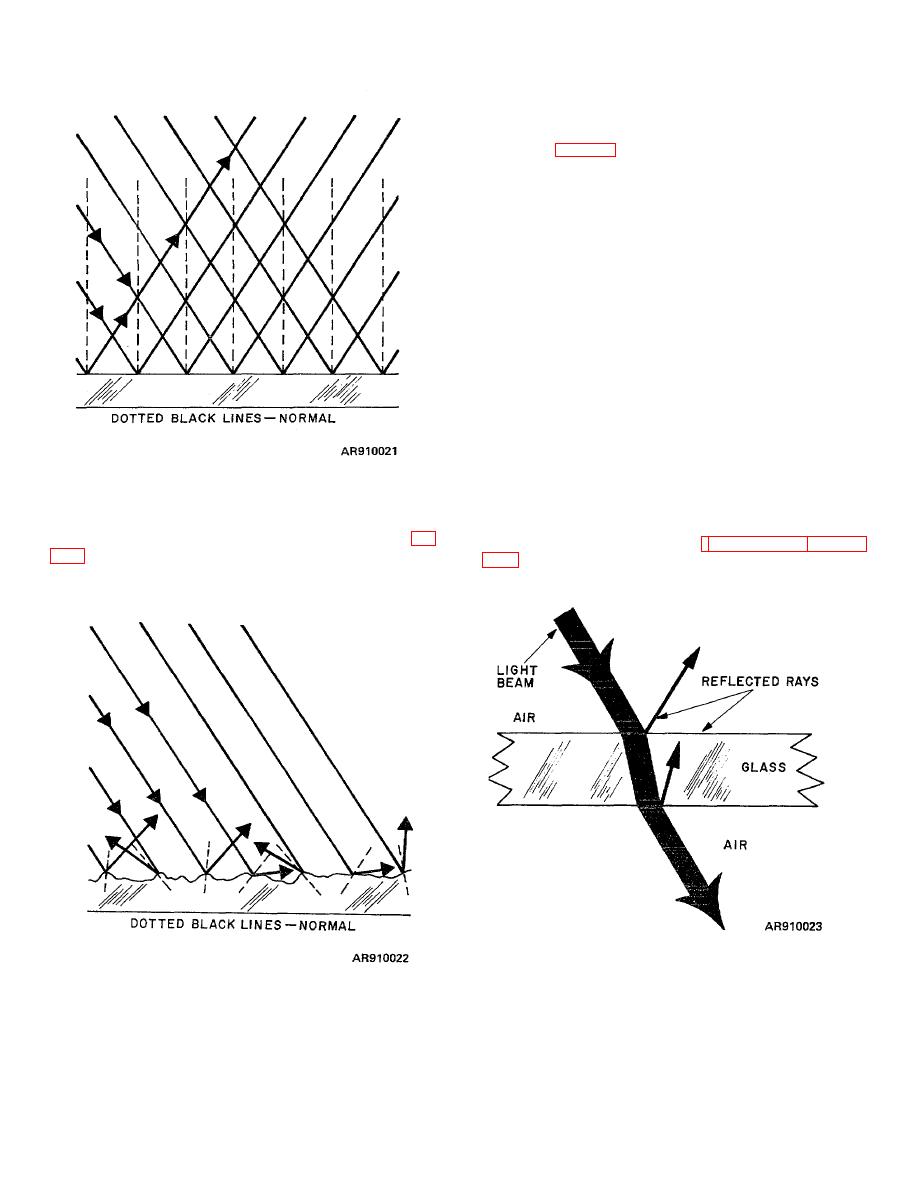 |
|||
|
|
|||
|
Page Title:
Figure 2-15. Regular reflection. |
|
||
| ||||||||||
|
|
 TM 9-258
d. The direction in which any single ray of light will
be reflected can be plotted by erecting a perpendicular or
normal at the point of impact and applying the law of
reflection (fig 2-16). Any rough surface can be regarded
as an almost infinite number of elementary plane
surfaces at each of which the law of reflection holds true.
e. Light is reflected by diffusion or by regular
reflection and diffusion from nearly every object which is
seen. Because the light falling on such an object is, in
part, scattered in all directions, the object is made visible,
generally, when viewed from any direction. Skin, fur, and
every dull surface reflect light in essentially a diffused
manner. The glossy finish of a new automobile or the
bright finish of a polished casting reflect light essentially
by regular reflection and partially by diffusion.
f. Surfaces of transparent mediums such as optical
interfaces also will reflect. The amount of incident light
reflected depends upon the angle of incidence. As the
angle of incidence increases, so does the amount of
reflected light. When light passes through a piece of
glass, reflection occurs at both surfaces as in figure 2-
17. Approximately 4 percent of the incident light is lost or
Figure 2-15. Regular reflection.
reflected at the first surface and another 4 percent of the
emergent light is lost by reflection at the second surface.
c. If a beam of light strikes a rough surface, such
Thus, both reflection and refraction (the bending of light)
as a sheet of unglazed paper or ground glass, the light is
occur at any optical interface. The importance to optical
not reflected regularly but is scattered in all directions (fig
systems is discussed in detail in paragraphs 4-1 through
Figure 2-17. Reflection at optical interfaces
Figure 2-16. Irregular or diffuse reflection.
2-12
|
|
Privacy Statement - Press Release - Copyright Information. - Contact Us |